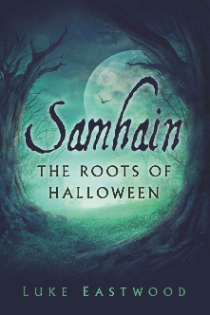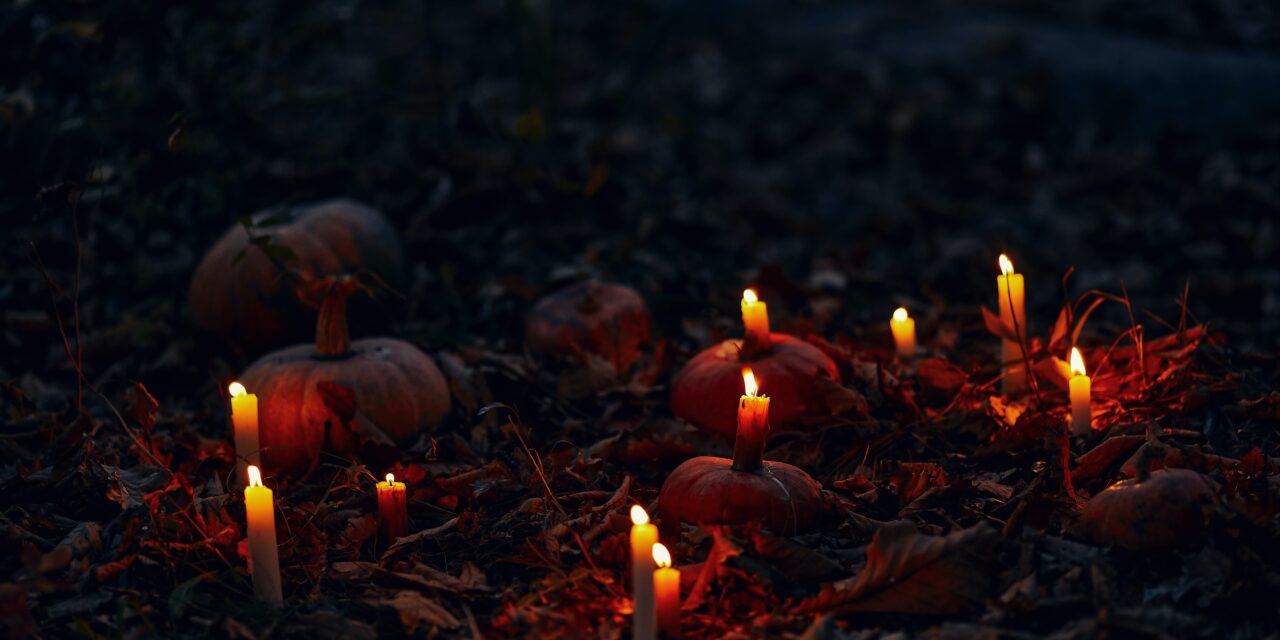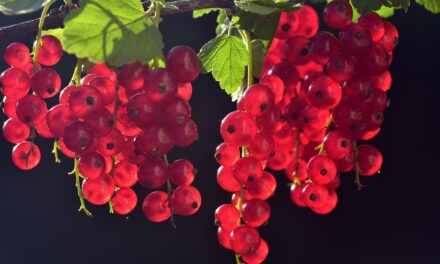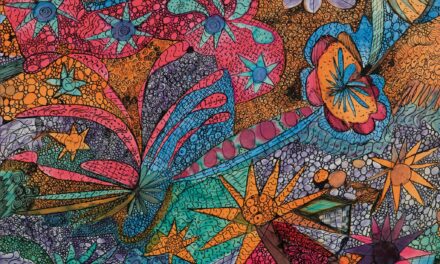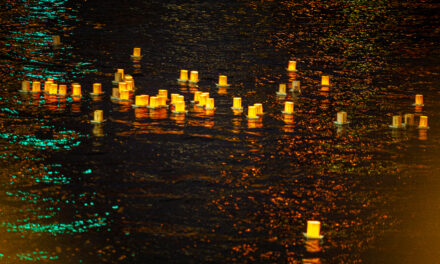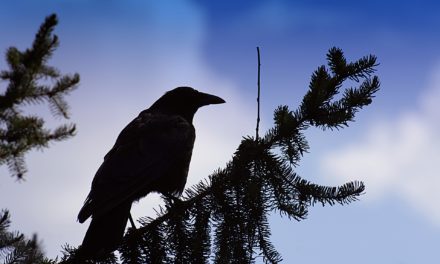We are all familiar with the popular festival of Halloween and its spooky associations but its history goes way back in time, with practices enduring despite the disapproval of the Roman Catholic Church. In fact, its origins reach much further back, into the Pagan past, and the time of the Druids when it was known as Gaeilge (in Irish) as Samhain. Of course, the traditions and history of this festival and the survivals into our modern era is a massive subject to cover, but here are a few snippets from my recent book.
The Irish year was divided into two halves – winter (geimhreadh) and summer (samhradh), with winter preceding summer. We see the same thing in Gaul, as demonstrated by the Coligny calendar, with three days to celebrate Samionos (Samhain) – TRINVX SAMO SINIV or ‘the three nights of Samonios.’ In the same way as the year, the day was divided into two halves, with the night (from sunset) preceding the daylight. The year itself was subdivided into eight parts of approximately six weeks, each marked by a festival. These eight festivals began at the Celtic New Year, which was Samhain, summer’s end, which is considered the entry point into the dark part of the year. The eight points of note are (in order) Samhain, winter solstice, Imbolc, spring equinox, Bealtaine, summer solstice, Lughnasadh and autumn equinox.
Games and Tricks
It was common for young people, until recent times, to go out and cause havoc and harmless mischief in impersonation of the spirits of the dead and the sidhe, who could be capricious. This has clearly evolved into the modern tradition of ‘trick or treat.’ It is well known that games took place at the aonach, or assembly, and Samhain was no exception, so the idea of games that has survived into the modern era is undoubtedly derived from the ancient games held at Samhain, although we have no real accounts of what those games were. Coupled with the interest in divination at this time, some of the games that developed or survived into the modern era are ‘divination games’ such as ducking for apples. Much of the games persisted into the Christian era but by the mid-twentieth century many of them were no longer taking place.
Sacred Fires
The bonfire is a recurring theme within Celtic festivals, particularly in Ireland. Ceremonies centred on the lighting of the winter fires are said to originate from Lugh Lámfhota (the Tuatha Dé Danann hero of the second battle of Moytura and later on also High King) around 1450 bce. This being the case, the tradition of sacred fires in Ireland is some 3,500 years old. Fire seems to be have been used at all eight of the pagan festivals, most notably at Bealtaine (two fires), the summer solstice and at Samhain.
The Halloween bonfire can be traced all the way back to the ancient festival at Tara, held every Samhain. All fires were extinguished all over Ireland before the sunset. The sacred fire was supposedly lit by the Druids at Tlachtga and brought to Tara where the king, nobility and Druids presided over the lighting of the fire. After the Tara fire was lit, fires were lit all over the country symbolising the offering of warmth and protection through the dark months of the year, at its entry point.
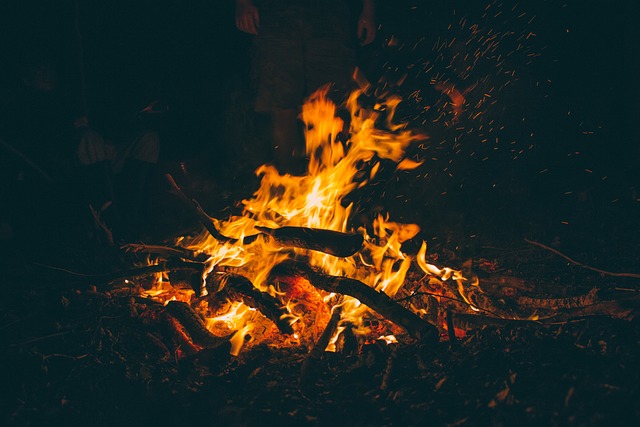
Coming of the Dead
As a time devoted to the dead (the ancestors) it was common to set a place at the dinner table for the departed. In some cases actual food was left on the plate as an actual, rather than symbolic, offering which would be left overnight. Candles were lit in the window(s) to help guide the spirits of the ancestors to the family home. Windows and doors were also left ajar to aid the spirits of the family dead to enter the home. As it was considered that theráth and ancient burial mounds were portals or entry/exit points between the middleworld and the otherworld, offerings were often left at mounds and raths.
Failure to make appropriate gestures to the ancestors at Samhain was considered to be bad luck and disrespect could lead to a person being ostracised. For instance – a person who ate the food left for ancestors would be barred from participating in the Samhain festivities. It was also considered that after their own death, they would not be able to return to their descendants to participate at Samhain – a quite considerable punishment. It was also thought that those who did not throw out dirty water and damp down the fire could be attacked by unwanted spirits of the dead.
There is a vast treasure trove of lore relating to the sidhe riding out, the wild hunt, the fairies running amok and the King of the fairies gallivanting across the land at Samhain. These stories change down the ages and many variants of similar legends and ghost stories exist. An early example of such a story is that of Eachtra Nera in which Nera (a Connacht warrior) enters the otherworld via a ráth of the Tuatha Dé Danann. In some legends the dead or the fairies ride out on horses causing havoc and to be out alone on Samhain night is to risk being killed or abducted by them!
Belief that the dead could rise is clearly evidenced by the story ‘The Recovery of the Tain’
(Do fallsigud Tána bó Cualnge), from the Book of Leinster, in which the ghost of Fergus is raised. The story takes place during the reign of Guaire, the King of Connacht, at which time the epic story (Táin Bó Cúailnge) was known in fragments and was incomplete.
Halloween Food
Food activities took place before the evening meal, the Halloween meal itself and post-meal festivities. Pre-meal snacks might include apples or toffee apples and nuts, or even a boxty (potato pancakes). The Halloween meal itself would generally include a savoury and sweet bread/ cake, with potatoes (obviously from the 1600s onwards) usually being a major component. Colcannon (mashed potato with cabbage or kale) was very popular but also various forms of boxty was common. In addition, cabbage, kale, onion, turnips, beans, hazelnuts, herring, sloes, apples, and peas might also feature in the meal or in the divination games and activities afterwards.
The use or absence of salt was also of some significance. A bread of cakes was also eaten at the meal, either a home-made or shop-bought barmbrac, oaten cakes (especially in Northern counties) or even a sweet variant of boxty. In more affluent times, in the twentieth century, urban celebrations of more affluent families did include more exotic ingredients such as oranges, grapes, and coconuts.
Some of these culinary traditions have survived up until today, some have not. Perhaps the most common survival is the barmbrac, although today it usually a worthless ring, baked into the loaf but not wrapped in greaseproof paper, as in earlier times. Many of these old traditions are associated with special activities such as food for the fairies (sidhe) and the dead, or as part of Halloween games, usually connected with divination in some form.
Food was also left for the fairies specifically, to appease them on Halloween night. A portion of mashed potato or colcannon might be left by the hearth or possibly outside the house. Oatcakes were often left for the fairies in Donegal, milk was a popular offering to the fairies and regional variations applied, as with the Halloween food in general. The Schools Collection provides another interesting account, from County Galway, in relation to the fairies: The first plate of this colcannon is kept for the fairies lest they should be hungry while changing from the Summer residence to their Winter home. No salt should be put on their portion.
~~
Excerpted from Samhain: The Roots of Halloween by Luke Eastwood, published by The History Press and available from the usual outlets, or you can buy a signed copy from Luke at his website.
